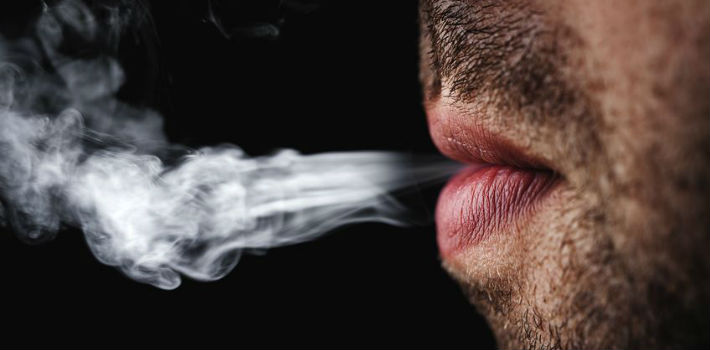Alaska, Oregon, DC, and Florida Demonstrate Diverse Approach to Ending Prohibition
November’s midterm elections represent the next phase of marijuana legislation reform in the United States. Marijuana reform efforts will be put to a vote in Alaska, Oregon, Washington, DC, and Florida.
This year’s ballot measures come on the heels of 2012’s initial wave of legalization in Colorado and Washington, but a close look reveals significant differences between each of them.
Alaska
The details of Ballot Measure 2 in Alaska are similar to those within standing Colorado law. Alaska residents over the age of 21 would be allowed to possess up to an ounce of marijuana, while cultivating a maximum of six plants in their home.
However, Taylor Bickford of the Campaign to Regulate Marijuana Like Alcohol in Alaska, says Alaska is culturally, socially, and politically distinct from other states in similar circumstances. “What makes Alaska different is that we already have the highest rates of use in the country. It’s a different landscape,” Bickford told the PanAm Post. “That’s important politically, because were not asking voters to pass an initiative that would introduce marijuana into the state for the first time.… Everyone in this state knows someone that uses marijuana, or uses it themselves.”
What makes Alaska different is that we already have the highest rates of use in the country. It’s a different landscape.
While the northern-most state in the union is typically considered a conservative bastion, Alaska has actually permitted marijuana possession since a 1975 Supreme Court ruling, and medical use has been legal since 1998. However, efforts to legalize the recreational sale of cannabis have failed twice before, in 1990 and 2004.
Bickford says Alaska has a “heavy libertarian streak” that has influenced the state’s view of marijuana for the past several decades. “It’s not a traditional red state.… You have a lot of conservatives who live in rural areas who generally just want the government to leave them alone.”
The current legal state of marijuana in Alaska is particularly unique. While doctors are allowed to prescribe marijuana for medical use, medical marijuana dispensaries do not actually exist, meaning patients continue to be pushed to the black market. Proponents of the current ballot initiative look to the law to not only set the stage for the future of marijuana use in the state, but to also tie up the loose ends of past legislation.
If passed, the Alcoholic Beverage Control Board will regulate the production and sale of marijuana, and impose a US$50 per ounce tax at the time of purchase. Legalization is projected to add up to $10-15 million in tax revenue annually, with the cost of regulation estimated at $7 million.
As for the prospects for passage, Bickford says, “It’s a big question mark. The polling has been all over the place, and I don’t think anybody has a good handle on how this is going to turn out.”
Oregon
Measure 91 in Oregon has been widely reported as the most generous marijuana proposal to date, as far as quantity is concerned. If passed, it would allow the legal possession of up to eight ounces of marijuana plant material, one pound of edibles, and 72 ounces of liquid derivatives. However, Brad Reed, the deputy communications director of New Approach Oregon, told the PanAm Post that those reports are “a little bit inaccurate.”
The Oregon legislation “is the same as Colorado and Washington, in that it permits up to an ounce to be carried in public,” said Reed. “Where we differ, is that law allows up to eight ounces to be possessed at home.” In fact, according to Reed, Measure 91 is “a little more restrictive than the Colorado law, which allows 12 plants to be grown at home.” In Oregon, only 4 plants will be permitted, as long as they are “out of public sight.”
In 1973, Oregon became the first state to decriminalize marijuana possession. However, as in Alaska, a ballot measure aimed at full legalization failed in 2012, drawing just under 47 percent support.
As with proposals in other states, Measure 91 proposes taxing cannabis producers. According to Reed, tax rates were specifically designed “to be low enough to push out the criminal market … to keep the price competitive, but also raise the dollars necessary for vital state resources.”
Oregon’s Legislative Revenue Office marijuana sales will generate between $6.5 million and $12.8 million in 2016, with tax revenues increasing to around $20 million in each of the next two fiscal years.
If passed, the Oregon Liquor Control Commission will impose a $35 tax at the point of sale, with revenue slated for specific sectors. “The breakdown is 40 percent for schools, 35 percent to both state and local police, and 25 percent to drug treatment/prevention and mental health programs.”
Oregon’s Legislative Revenue Office estimates marijuana sales will generate between $6.5 million and $12.8 million in 2016, with tax revenues increasing to around $20 million in each of the next two fiscal years.
The most recent polling has Oregonians leaning toward legalization, with 52 percent in favor and 41 percent opposed.
Washington, DC
Initiative 71 in Washington, DC is distinct from legalization efforts in Alaska and Orego, as well as their forbearers in Colorado and Washington. “DC is unique, because it’s not a state,” explained Nikolas Schiller, communications director for the DC Cannabis Campaign.
“Article 1, Section 8, Clause 17 of the US Constitution gives Congress exclusive jurisdiction over the District of Columbia. DC residents are allowed to elect their own mayor and city council, but all legislation must receive congressional approval.”
Unlike Alaska, Oregon, Colorado, and Washington, the DC law would not actually permit the sale of cannabis. Voter initiatives cannot directly impact budgetary affairs because the district is under the management of the federal government, thus taxation and regulation of the sale of marijuana is not part of the current proposed legislation.
“Instead, ballot initiatives can expand freedoms,” Schiller said. “This is the primary difference between DC and [marijuana legalization] efforts in other states. This is about expanding freedoms to DC residents.”
DC is unique, because it’s not a state.… Residents are allowed to elect their own mayor and city council, but all legislation must receive congressional approval.
However, there are indications that the legal sale of marijuana is the next step in the district. In a recent debate, two of three candidates in the upcoming mayoral election — including frontrunner Democrat Muriel Bowser— said they would take steps to set up legal retail outlets if elected.
Even if Initiative 71 is passed, marijuana possession in the city would still rest in a legal grey area, because the federal government owns much of the district’s land. “About 22 percent of DC’s land is federal land, and local law does not trump federal law,” explained Schiller. “Therefore, if someone is walking down the National Mall with the legally permitted 2 ounces or less in their pocket, they could be arrested.”
This issue will remain unresolved regardless of the outcome of November’s vote. Earlier this year, the Washington, DC city council reduced the penalty for possession of less than an ounce of marijuana to a $25 fine, without the possibility of jail time.
This is the penalty if caught with marijuana on a city street. However, if caught on the city’s federal grounds, including areas like Dupont Circle orMeridian Hill Park that are frequented by both tourists and DC residents, there are much stiffer penalties to be faced.
Support for legalization in DC is stronger than any other measure up for vote in the November elections. A recent Washington Post poll showed legalization supporters outnumber the opposition “by an almost 2-to-1 margin.”
If the initiative passes, it must then go through a newly elected Congress in January 2015 before it can be enacted. However, Schiller and other legalization advocates are counting on the fact that Congress does not necessarily have to take action for the law to go into effect. “It’s a passive approval,” he explained, “[Congress] not doing anything at all … [is] what we hope happens.”
Florida
Unlike the other legalization efforts on the ballot this November,Amendment 2 in Florida is focused strictly on medical marijuana. If passed, it would allow “the medical use of marijuana for individuals with debilitating diseases as determined by a licensed Florida physician.”
Despite the fact that the measure will not fully legalize cannabis, marijuana activists face their toughest challenge in the sunshine state. In 2006, voters approved the Florida Supermajority Requirement Amendment, making Florida the second US state to require 60 percent of the vote to approve amendments to the state’s constitution.
Amendment 2 in Florida, if passed, would allow the medical use of marijuana for individuals with debilitating diseases as determined by a licensed Florida physician.
Although approval seemed likely early in the year, recent pollingsuggests surpassing the 60 percent threshold will be a tall order for Amendment 2 proponents. The change in public opinion follows a substantial increase in funding of conservative opposition groups.
“This is the first time a campaign of this nature has experienced any sort of well-funded, well-organized opposition,” Ben Pollara, campaign manager atUnited for Care, told the PanAm Post.
Pollara is referring to the millions of dollars that has come from outside the state of Florida, aimed at keeping marijuana illegal in the state. “The history of these campaigns is that they do not face this kind of opposition. But the opponents here in Florida — who, by the way, are largely funded by people who are not from Florida — have put about $4 million into defeating us.”
Pollara, however, remains optimistic. “There has been pretty broad support across the board.… We are tracking polling every single day, and we are still well within striking distance of that 60 percent mark.”











Sign up on lukeunfiltered.com or to check out our store on thebestpoliticalshirts.com.